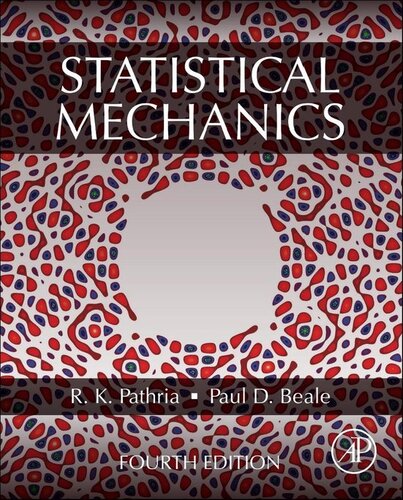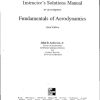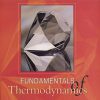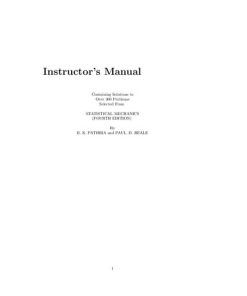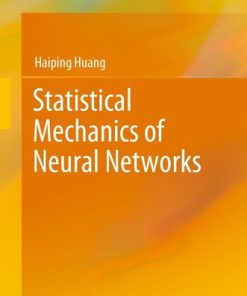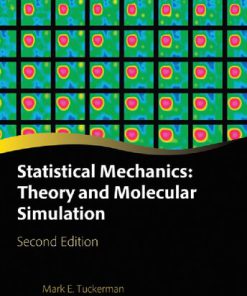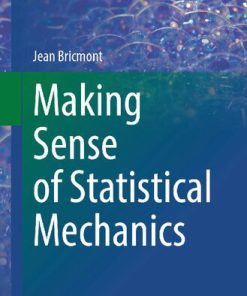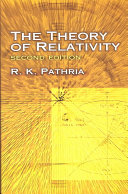Statistical Mechanics Fourth Edition by R K Pathria, Paul D Beale 9780081026939 0081026935
$50.00 Original price was: $50.00.$25.00Current price is: $25.00.
Statistical Mechanics Fourth Edition R K Pathria Paul D Beale – Ebook PDF Instant Download/Delivery, ISBN: 9780081026939, 0081026935
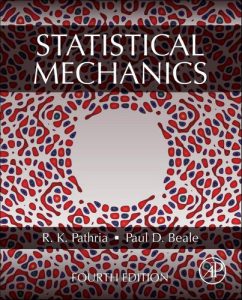
Product details:
- ISBN 10: 0081026935
- ISBN 13:9780081026939
- Author: R K Pathria, Paul D Beale
Statistical Mechanics
- Retains the valuable organization and trusted coverage of previous market-leading editions
- Includes new coverage on biophysical applications and computer simulations
- Offers Mathematica files for student use and a secure solutions manual for qualified instructors
- Covers Bose-Einstein condensation in atomic gases, Thermodynamics of the early universe, Computer simulations: Monte Carlo and molecular dynamics, Correlation functions and scattering, Fluctuation-dissipation theorem and the dynamical structure factor, and much more
Table contents:
1: The statistical basis of thermodynamics
Abstract
1.1. The macroscopic and the microscopic states
1.2. Contact between statistics and thermodynamics: physical significance of the number Ω(N,V,E)
1.3. Further contact between statistics and thermodynamics
1.4. The classical ideal gas
1.5. The entropy of mixing and the Gibbs paradox
1.6. The “correct” enumeration of the microstates
Problems
Bibliography
2: Elements of ensemble theory
Abstract
2.1. Phase space of a classical system
2.2. Liouville’s theorem and its consequences
2.3. The microcanonical ensemble
2.4. Examples
2.5. Quantum states and the phase space
Problems
Bibliography
3: The canonical ensemble
Abstract
3.1. Equilibrium between a system and a heat reservoir
3.2. A system in the canonical ensemble
3.3. Physical significance of the various statistical quantities in the canonical ensemble
3.4. Alternative expressions for the partition function
3.5. The classical systems
3.6. Energy fluctuations in the canonical ensemble: correspondence with the microcanonical ensemble
3.7. Two theorems – the “equipartition” and the “virial”
3.8. A system of harmonic oscillators
3.9. The statistics of paramagnetism
3.10. Thermodynamics of magnetic systems: negative temperatures
Problems
Bibliography
4: The grand canonical ensemble
Abstract
4.1. Equilibrium between a system and a particle–energy reservoir
4.2. A system in the grand canonical ensemble
4.3. Physical significance of the various statistical quantities
4.4. Examples
4.5. Density and energy fluctuations in the grand canonical ensemble: correspondence with other ensembles
4.6. Thermodynamic phase diagrams
4.7. Phase equilibrium and the Clausius–Clapeyron equation
Problems
Bibliography
5: Formulation of quantum statistics
Abstract
5.1. Quantum-mechanical ensemble theory: the density matrix
5.2. Statistics of the various ensembles
5.3. Examples
5.4. Systems composed of indistinguishable particles
5.5. The density matrix and the partition function of a system of free particles
5.6. Eigenstate thermalization hypothesis
Problems
Bibliography
6: The theory of simple gases
Abstract
6.1. An ideal gas in a quantum-mechanical microcanonical ensemble
6.2. An ideal gas in other quantum-mechanical ensembles
6.3. Statistics of the occupation numbers
6.4. Kinetic considerations
6.5. Gaseous systems composed of molecules with internal motion
6.6. Chemical equilibrium
Problems
Bibliography
7: Ideal Bose systems
Abstract
7.1. Thermodynamic behavior of an ideal Bose gas
7.2. Bose–Einstein condensation in ultracold atomic gases
7.3. Thermodynamics of the blackbody radiation
7.4. The field of sound waves
7.5. Inertial density of the sound field
7.6. Elementary excitations in liquid helium II
Problems
Bibliography
8: Ideal Fermi systems
Abstract
8.1. Thermodynamic behavior of an ideal Fermi gas
8.2. Magnetic behavior of an ideal Fermi gas
8.3. The electron gas in metals
8.4. Ultracold atomic Fermi gases
8.5. Statistical equilibrium of white dwarf stars
8.6. Statistical model of the atom
Problems
Bibliography
9: Thermodynamics of the early universe
Abstract
9.1. Observational evidence of the Big Bang
9.2. Evolution of the temperature of the universe
9.3. Relativistic electrons, positrons, and neutrinos
9.4. Neutron fraction
9.5. Annihilation of the positrons and electrons
9.6. Neutrino temperature
9.7. Primordial nucleosynthesis
9.8. Recombination
9.9. Epilogue
Problems
Bibliography
10: Statistical mechanics of interacting systems: the method of cluster expansions
Abstract
10.1. Cluster expansion for a classical gas
10.2. Virial expansion of the equation of state
10.3. Evaluation of the virial coefficients
10.4. General remarks on cluster expansions
10.5. Exact treatment of the second virial coefficient
10.6. Cluster expansion for a quantum-mechanical system
10.7. Correlations and scattering
Problems
Bibliography
11: Statistical mechanics of interacting systems: the method of quantized fields
Abstract
11.1. The formalism of second quantization
11.2. Low-temperature behavior of an imperfect Bose gas
11.3. Low-lying states of an imperfect Bose gas
11.4. Energy spectrum of a Bose liquid
11.5. States with quantized circulation
11.6. Quantized vortex rings and the breakdown of superfluidity
11.7. Low-lying states of an imperfect Fermi gas
11.8. Energy spectrum of a Fermi liquid: Landau’s phenomenological theory
11.9. Condensation in Fermi systems
Problems
Bibliography
12: Phase transitions: criticality, universality, and scaling
Abstract
12.1. General remarks on the problem of condensation
12.2. Condensation of a van der Waals gas
12.3. A dynamical model of phase transitions
12.4. The lattice gas and the binary alloy
12.5. Ising model in the zeroth approximation
12.6. Ising model in the first approximation
12.7. The critical exponents
12.8. Thermodynamic inequalities
12.9. Landau’s phenomenological theory
12.10. Scaling hypothesis for thermodynamic functions
12.11. The role of correlations and fluctuations
12.12. The critical exponents ν and η
12.13. A final look at the mean field theory
Problems
Bibliography
13: Phase transitions: exact (or almost exact) results for various models
Abstract
13.1. One-dimensional fluid models
13.2. The Ising model in one dimension
13.3. The n-vector models in one dimension
13.4. The Ising model in two dimensions
13.5. The spherical model in arbitrary dimensions
13.6. The ideal Bose gas in arbitrary dimensions
13.7. Other models
Problems
Bibliography
14: Phase transitions: the renormalization group approach
Abstract
14.1. The conceptual basis of scaling
14.2. Some simple examples of renormalization
14.3. The renormalization group: general formulation
14.4. Applications of the renormalization group
14.5. Finite-size scaling
Problems
Bibliography
15: Fluctuations and nonequilibrium statistical mechanics
Abstract
15.1. Equilibrium thermodynamic fluctuations
15.2. The Einstein–Smoluchowski theory of the Brownian motion
15.3. The Langevin theory of the Brownian motion
15.4. Approach to equilibrium: the Fokker–Planck equation
15.5. Spectral analysis of fluctuations: the Wiener–Khintchine theorem
15.6. The fluctuation–dissipation theorem
15.7. The Onsager relations
15.8. Exact equilibrium free energy differences from nonequilibrium measurements
Problems
Bibliography
16: Computer simulations
Abstract
16.1. Introduction and statistics
16.2. Monte Carlo simulations
16.3. Molecular dynamics
16.4. Particle simulations
16.5. Computer simulation caveats
People also search:
statistical mechanics
thermodynamics and statistical mechanics
statistical mechanics textbook meme
physica a statistical mechanics and its applications
pathria statistical mechanics pdf
You may also like…
Physics - Mechanics
Physics - Mechanics
Statistical Mechanics: 5th Edition by R.K. Pathria 0081026927 9780081026922
Physics - Mechanics
Statistical Mechanics An Introductory Graduate Course 1st Edition A.J. Berlinsky
Mathematics - Mathematical Physics
Statistical Mechanics of Neural Networks 1st Edition Haiping Huang
Mathematics - Mathematical Physics
Statistical Mechanics: Theory and Molecular Simulation 2nd Edition Mark E. Tuckerman
Physics - Mechanics
Making Sense of Statistical Mechanics 1st Edition Jean Bricmont
Mathematics - Mathematical Physics
Statistical Mechanics of Neural Networks 1st Edition Haiping Huang

